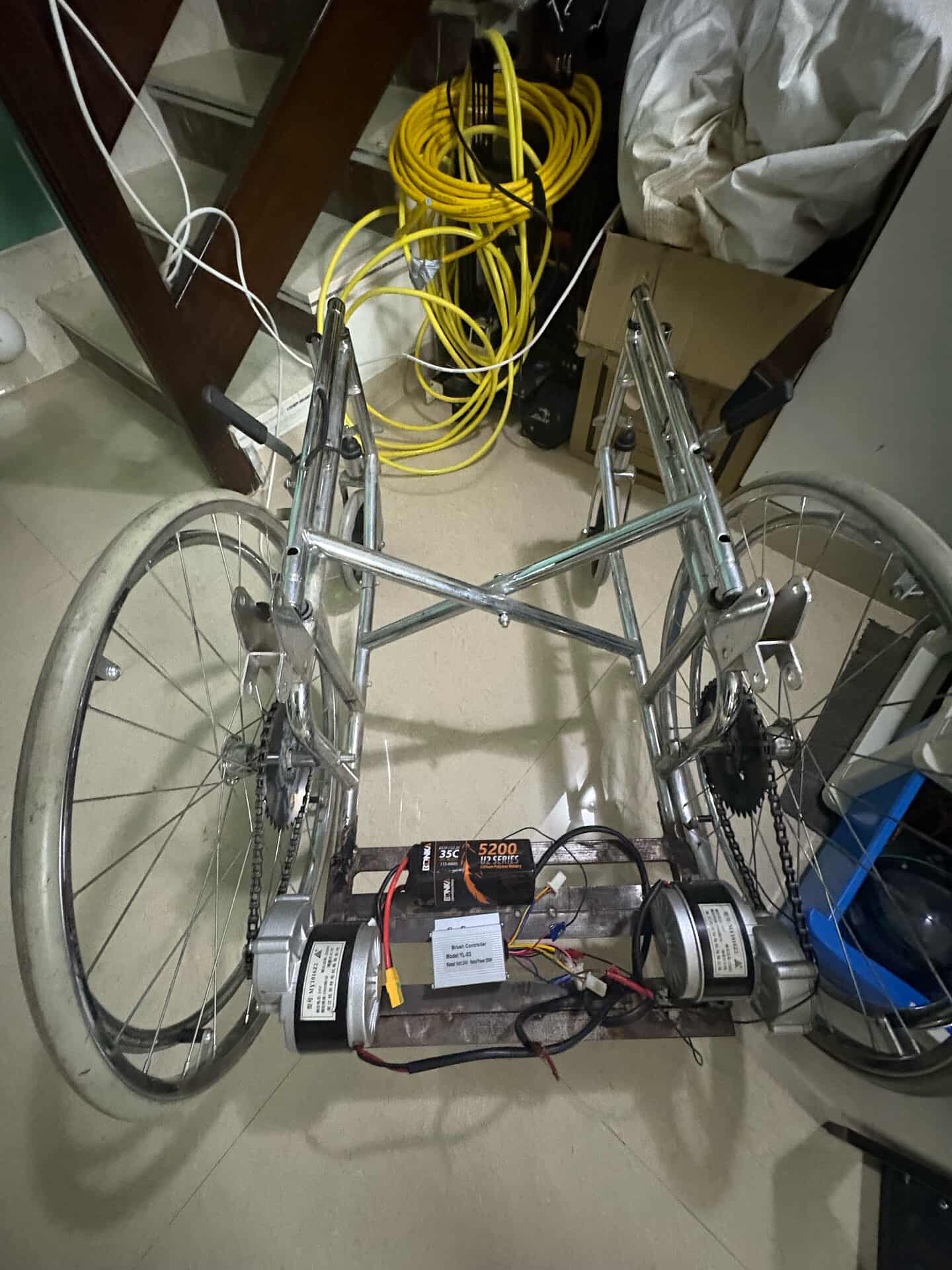NavAid - AI-Driven Indoor Navigation for Wheelchairs
Empowering Autonomous Mobility for Enhanced Accessibility

All hospitals need wheelchairs to help patients who cannot move independently. Currently, attendants are needed to push manual wheelchairs, which limits the nursing staff available for critical care. This research is working to develop a novel autonomous wheelchair, which is capable of navigating indoor hospital environments without assistance. Hence, allowing the nursing staff to attend to more urgent patients. An ESP32 microcontroller controls two electric motors which is attached to the wheelbase allowing for smooth movement. Meanwhile, infrared (IR) technology was explored and developed, using a 940nm IR emitter beacon. While effective at short range, IR is hindered by external, ambient interference, which constrains the range. A near-infrared (NIR) camera was also tested, coded to capture an environmental heat map. Similarly, the range was insufficient for broader navigation.For obstacle avoidance and detection, ultrasonic sensors were used, providing precise distance measurements up to 2 meters away. This allows the system respond to dynamic variables of its surrounding. As an alternative to IR, the system utilizes radio signal strength-based localization. Specifically, Wi-Fi fingerprinting, which uses Received Signal Strength Indicator (RSSI) values from various access points to estimate the wheelchair's location. As Wi-Fi is a necessity, this method allows for awareness around a large indoor area without any additional infrastructure.However, radio positioning lacks fine resolution and precision. Hence, it is used in conjunction with LiDAR and ultrasonic sensors to enable wall-following, door detection, and safe path planning. The fusion of multiple sensors creates a novel solution to indoor patient transport systems (IPS), offering a low cost and reliable system.
- Autonomous room-to-room navigation for wheelchairs
- Intuitive touchscreen interface for destination selection
- Real-time obstacle detection and avoidance using AI
- Precise indoor positioning without reliance on GPS
- Modular design for integration with various wheelchair models
- Developing robust AI for dynamic indoor environments and human interaction
- Ensuring high accuracy and reliability of the Indoor Positioning System
- Optimizing power consumption for extended operational periods
- Designing a user-friendly interface for diverse user needs
- Significantly enhances independence and mobility for wheelchair users
- Reduces reliance on caregivers for indoor navigation
- Paves the way for smarter, more accessible living spaces
- Showcases innovative application of AI and robotics for social good